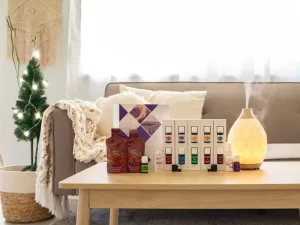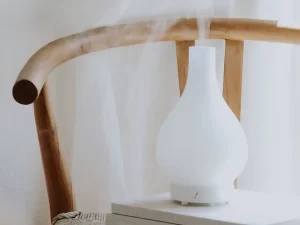Who or what is the Dirty Dozen? The Environmental Working Group (EWG) publish The Dirty Dozen each year, listing the fruit and vegetables most contaminated with nasty chemicals. These chemicals come from pesticides and herbicides used on the farms which grow the produce. So, if you can only afford to buy a few organic fruit and vegetables, start with the ones on this list. Otherwise, you could eat less of the ones listed as most contaminated and also wash them really thoroughly in the Thieves Fruit and Veggie Soak.
Many people know about the importance of eating healthy in order to stay well. But, did you know it’s just as important to look at the products you’re putting ON your body as the ones you put IN your body. There are lots of nasty chemicals in your home that could be making you and your family sick. That is why one of the best ways to make small changes in your home is to be aware of what ingredients to avoid. So, let’s talk about the other Dirty Dozen. This Dirty Dozen lists twelve ingredients that I suggest avoiding when choosing products for your home.
Dirty Dozen List
1. BHA and BHT are Endocrine disruptors (see below for what this means) and carcinogens (cancer-causing) and are used mainly in cosmetics as preservatives
2. Coal tar dyes are carcinogens and have a heavy metal toxicity. Nevertheless, you can find them in many processed foods, lipstick, hair dyes.
3. DEA-related ingredients – also carcinogens. Look for them in creamy or foaming products, such as moisturizers and shampoos.
4. Dibutyl phthalates are Endocrine disruptors, as well as reproductive toxicants. You’ll find them most commonly in nail care products. Air fresheners contain phthalates and are quite harmful. As women we definitely don’t want to be breathing these in and neither do our children or the men in our lives.
5. Formaldehyde-releasing preservatives are carcinogens too. Cosmetic companies use them as preservatives. They’re highly toxic systemic poisons that are absorbed well by inhalation. The vapor is a severe respiratory tract and skin irritant and may cause dizziness or suffocation. You can also find them in air fresheners. Why would they put this stuff in something that is designed to be inhaled????
6. Parabens are Endocrine disruptors and they may interfere with male reproduction. You’ll find them in lots of personal care products and also as preservatives in cosmetics.
Phew! Take a deep breath… there are still 6 more!
7. Parfum/Fragrance are carcinogens and can cause neurotoxicity, allergies and skin sensitivities. Cosmetic companies use them to add ‘aroma’. Unfortunately they add a LOT more nasty side effects as well. Strangely, companies don’t have to disclose the ingredients due to “trade secret”.
8. PEG compounds: can be contaminated with 1,4-dioxane which may be a carcinogen. This ingredient is commonly used as the base for cosmetic creams.
9. Petrolatum – another carcinogen. You’ll find it used in hair products to give ‘shine’ and as the moisture barrier in lip balms/sticks.
10. Siloxanes are also Endocrine disruptors, as well as a reproductive toxicant. You’ll find them added to your cosmetics to ‘soften, smooth & moisten’.
11. Sodium laureth sulfates are carcinogens. Companies use these in foaming cosmetics, shampoos, cleansers, and bubble bath.
12. Triclosans are also Endocrine disruptors and can cause antibiotic resistance. You’re probably absorbing these through your toothpastes, cleansers and antiperspirants.
What is an Endocrine Disruptor?
We mentioned endocrine disruptors above, but what exactly are they and what do they do? Endocrine disruptors are chemicals that may interfere with the body’s endocrine system and produce adverse developmental, reproductive, neurological, and immune effects in both humans and wildlife. According to the Environmental Working Group, “There is no end to the tricks that endocrine disruptors can play on our bodies: increasing production of certain hormones; decreasing production of others; imitating hormones; turning one hormone into another; interfering with hormone signaling; telling cells to die prematurely; competing with essential nutrients; binding to essential hormones; accumulating in organs that produce hormones.” If you want to know more about hormones and if yours are out of balance then check out my blog post “How do I know if my hormones are out of balance?”
Switch to Healthy Young Living Products Today
It’s is easy to make the switch to natural, safer products that don’t mess with your hormones. Just buy from a trusted company like Young Living. You can’t always believe the labelling at the supermarket. Many companies do what is called ‘greenwashing’. This is where they stick a picture of the world on their packaging or use the term ‘earth friendly’ so we’ll believe that their products are safe. Believe me – they aren’t! Always check the ingredients.
Plus, if you want your house to smell nice naturally without resorting to harmful air fresheners, then I can hook you up with the best essential oils on the planet. It’s time to chuck the stuff that’s making your family sick. 🌱 Order your all-natural cleaning products today. 👇
www.myyl.com/kimthomson











 Subscribe to Hot Oily Mumma
Subscribe to Hot Oily Mumma